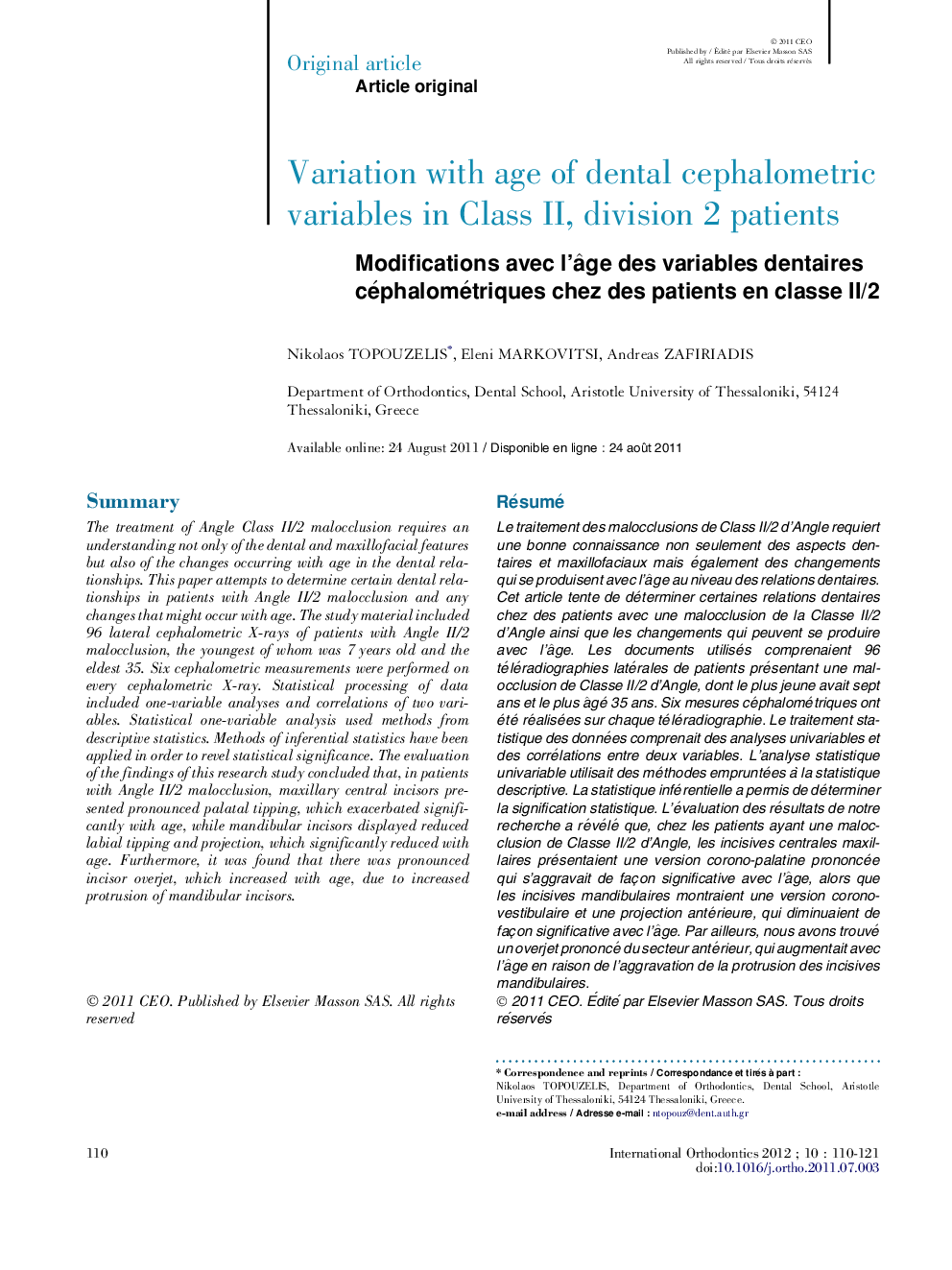| Article ID | Journal | Published Year | Pages | File Type |
|---|---|---|---|---|
| 3135296 | International Orthodontics | 2012 | 12 Pages |
Abstract
The treatment of Angle Class II/2 malocclusion requires an understanding not only of the dental and maxillofacial features but also of the changes occurring with age in the dental relationships. This paper attempts to determine certain dental relationships in patients with Angle II/2 malocclusion and any changes that might occur with age. The study material included 96 lateral cephalometric X-rays of patients with Angle II/2 malocclusion, the youngest of whom was 7Â years old and the eldest 35. Six cephalometric measurements were performed on every cephalometric X-ray. Statistical processing of data included one-variable analyses and correlations of two variables. Statistical one-variable analysis used methods from descriptive statistics. Methods of inferential statistics have been applied in order to revel statistical significance. The evaluation of the findings of this research study concluded that, in patients with Angle II/2 malocclusion, maxillary central incisors presented pronounced palatal tipping, which exacerbated significantly with age, while mandibular incisors displayed reduced labial tipping and projection, which significantly reduced with age. Furthermore, it was found that there was pronounced incisor overjet, which increased with age, due to increased protrusion of mandibular incisors.
Keywords
Related Topics
Health Sciences
Medicine and Dentistry
Dentistry, Oral Surgery and Medicine
Authors
Nikolaos Topouzelis, Eleni Markovitsi, Andreas Zafiriadis,
